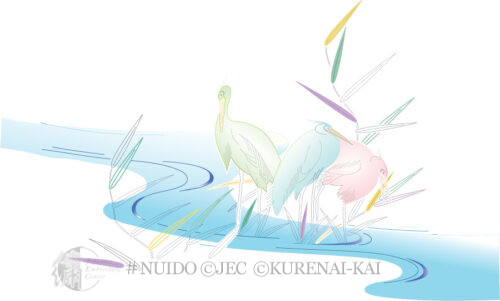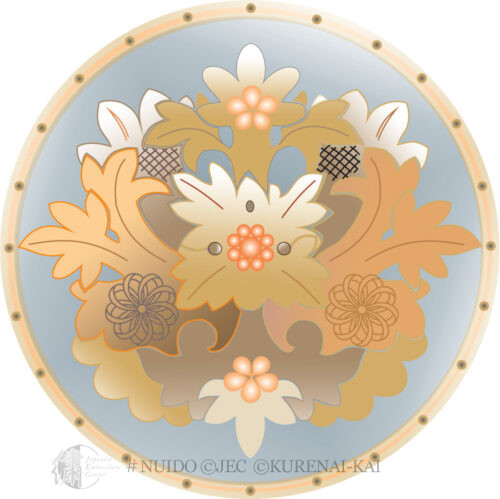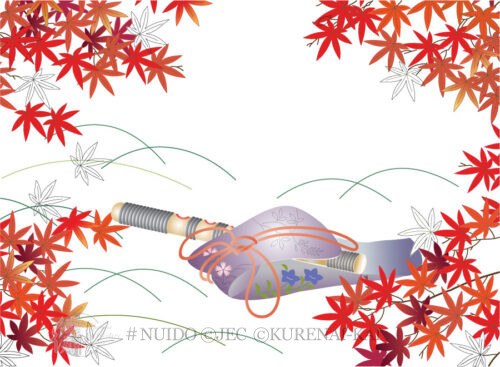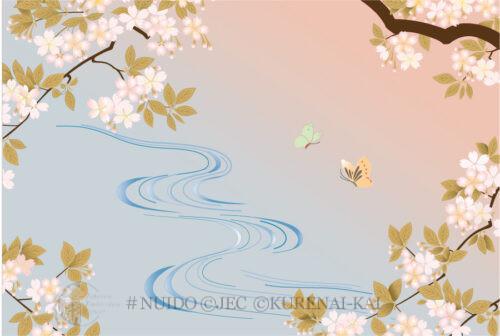Mountain grape vines decorate the scenery with their vivid colorful fruit. The grape is a rare motif in Japanese embroidery.
-
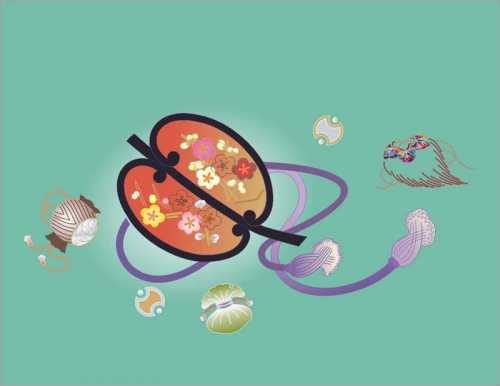
Gunbai, or “war fan” was a device used by samurai commanders to direct troops during battle maneuvers, and also a symbol of rank.
Nowadays, the gunbai is quite familiar to fans of Sumo wrestling as the referee’s device for conducting matches.
For this reason, the gunbai motif is used for boys’ kimono, demonstrating the wish that the wearer will be a leader, full of intelligence and determination.
Also, this motif is used for ladies’ kimono and obi to wish for guidance during the ordeals and turning points of life.
May the wearers be successful and achieve their aspirations.
-
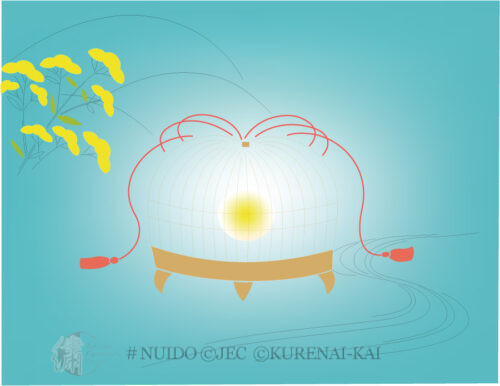
In Japan, there is a custom to “listen to insects. It makes us feel cool by listening to the insects singing while awaiting the arrival of the autumn season.
People continue to make traditional insect baskets using bamboo in traditional style. Children catching insects and storing them in a cage is a typical summer scene in Japan.
-
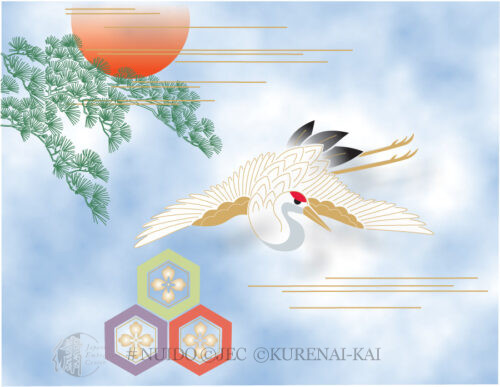
Pine, crane, and turtle (expressed as kikko, the hexagon pattern taken from turtle shells) are symbols of longevity in Japan. This is why these motifs can be often seen at celebrations such as weddings, or birthdays for elders. Examples of this can be seen on formal wedding kimonos, and the uchikake, the decorative kimono that is worn over the actual kimono, where beautiful images of those motifs are often embroidered.
-
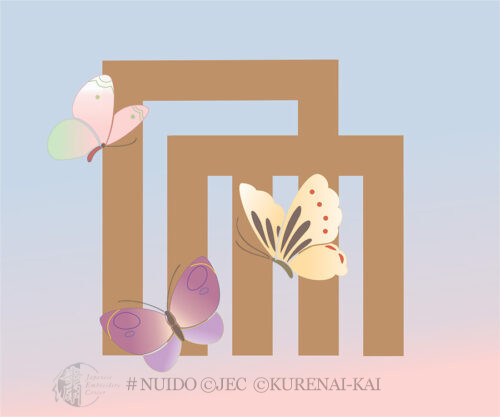
Spring design shows a Genji-mon with butterflies. The butterfly is considered to be a symbol of “the revival”
In Japan, it is used as the symbol of the incarnation of immortality, the immortality of a samurai.
This design is not so serious. It shows the return of spring and butterflies playing around the mon.
